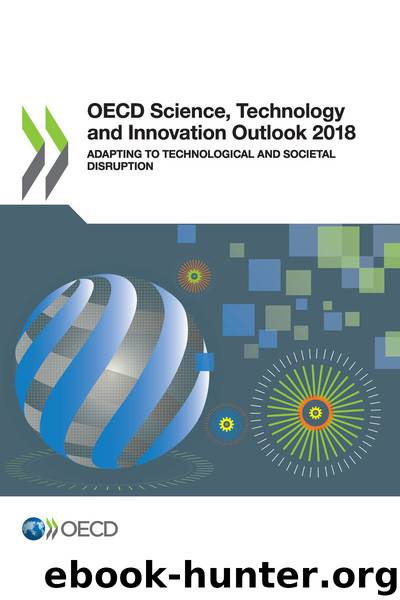OECD Science, Technology and Innovation Outlook 2018 by OECD

Author:OECD
Language: eng
Format: epub
Tags: governance/industry/science
Publisher: OECD Publishing
Published: 2018-11-18T16:00:00+00:00
Source: OECD (2017d), Education at a Glance 2017: OECD Indicators, https://doi.org/10.1787/eag-2017-en.
StatLink https://doi.org/10.1787/888933858240
Historically, the under-representation of women in STEM has received much greater attention than the under-representation of women in philosophy or economics, or the under-representation of men in psychology, veterinary sciences or nursing. When assessing the effect of efforts to attract more girls into STEM bachelor programmes, it is important to consider the disciplines separately (Figure 7.1). “Stuffing the pipeline” only helps when there is a future to be found in these fields upon graduation (Miller and Wai, 2015).
Efforts to address women’s under-representation in STEM are shaped and constrained by the manner in which the problem is framed, which needs to be sensitive to evolving contexts. For example, if it appears that more girls are not attracted to engineering because they are unaware of the opportunities or do not understand the nature of engineering work, then corrective actions should focus on outreach and informing them of the opportunities offered by engineering careers (Beddoes, 2011).
Furthermore, it is necessary to (re)consider how entry into certain higher education fields may be biased by reliance on standardised tests. For example, the Scholastic Aptitude Test scores commonly used for college admissions in the United States have been show to under-predict women’s academic performance and over-predict men’s, and test score differences do not necessarily translate into meaningful professional distinctions (Nature Editorial, 2005). Finally, if gender gaps in participation and performance are mutually reinforcing, educators seeking to promote women should address both factors simultaneously to maximise student achievement (Ballen, Salehi and Cotner, 2017). The small minority of female students who choose to enter some STEM fields may need mentoring and peer support – e.g. through networks – to perform optimally.
Download
This site does not store any files on its server. We only index and link to content provided by other sites. Please contact the content providers to delete copyright contents if any and email us, we'll remove relevant links or contents immediately.
International Integration of the Brazilian Economy by Elias C. Grivoyannis(91161)
The Radium Girls by Kate Moore(11921)
Turbulence by E. J. Noyes(7936)
Nudge - Improving Decisions about Health, Wealth, and Happiness by Thaler Sunstein(7615)
The Black Swan by Nassim Nicholas Taleb(7010)
Rich Dad Poor Dad by Robert T. Kiyosaki(6403)
Pioneering Portfolio Management by David F. Swensen(6226)
Man-made Catastrophes and Risk Information Concealment by Dmitry Chernov & Didier Sornette(5921)
Zero to One by Peter Thiel(5686)
Secrecy World by Jake Bernstein(4646)
Millionaire: The Philanderer, Gambler, and Duelist Who Invented Modern Finance by Janet Gleeson(4376)
The Age of Surveillance Capitalism by Shoshana Zuboff(4210)
Skin in the Game by Nassim Nicholas Taleb(4162)
Bullshit Jobs by David Graeber(4095)
The Money Culture by Michael Lewis(4076)
Skin in the Game: Hidden Asymmetries in Daily Life by Nassim Nicholas Taleb(3929)
The Dhandho Investor by Mohnish Pabrai(3699)
The Wisdom of Finance by Mihir Desai(3654)
Blockchain Basics by Daniel Drescher(3507)
